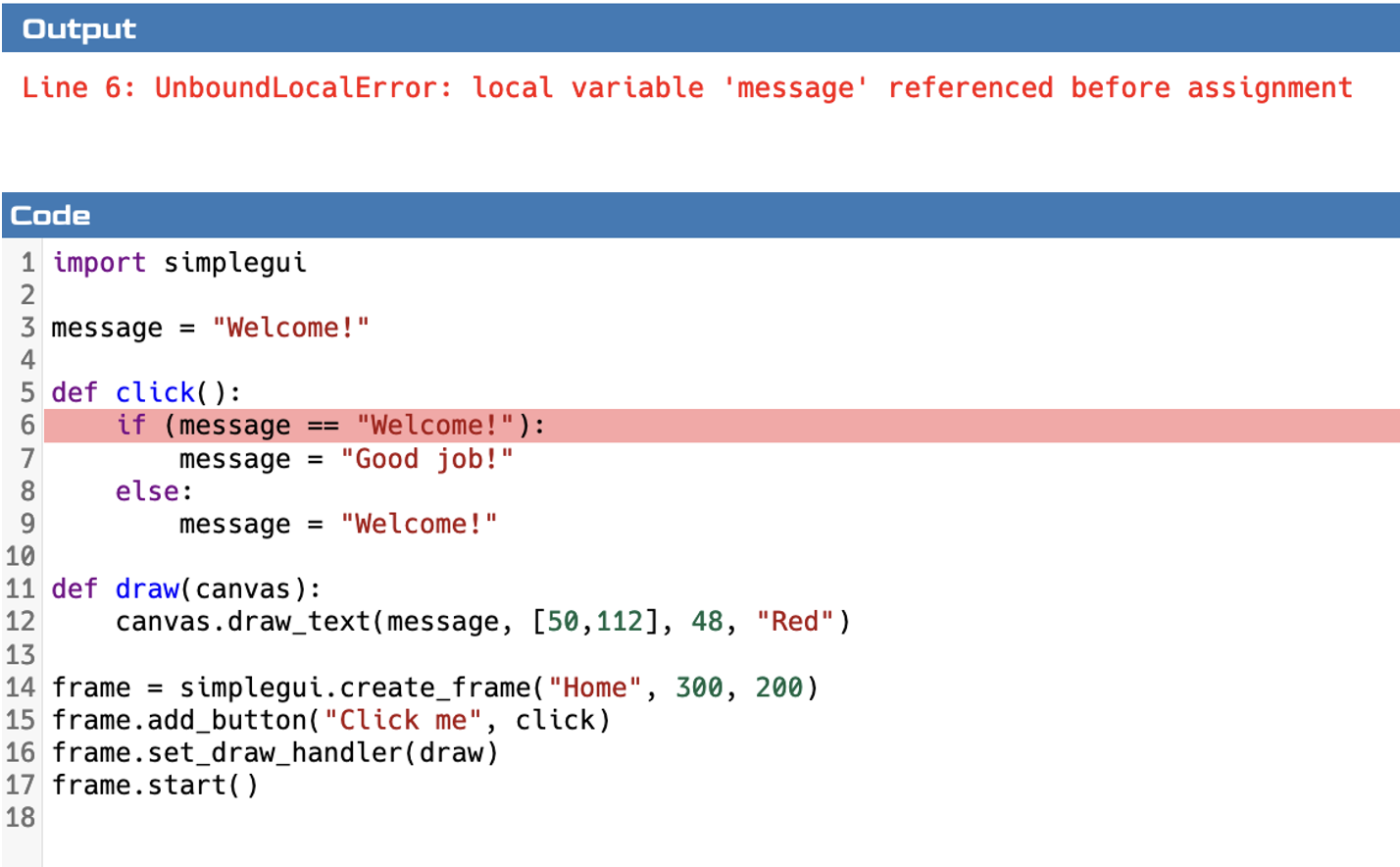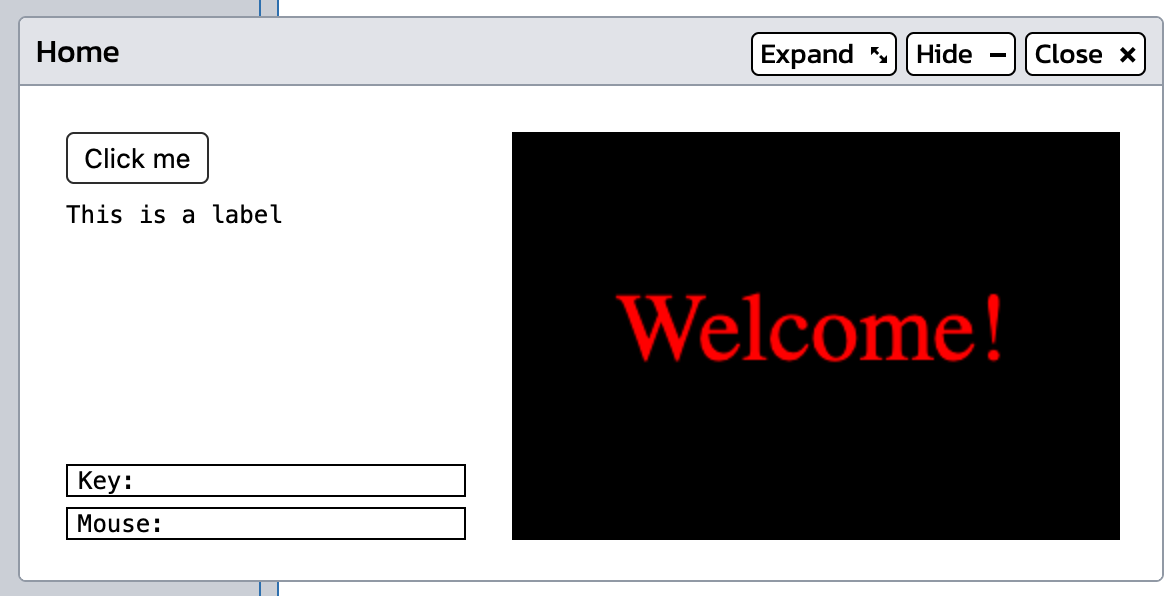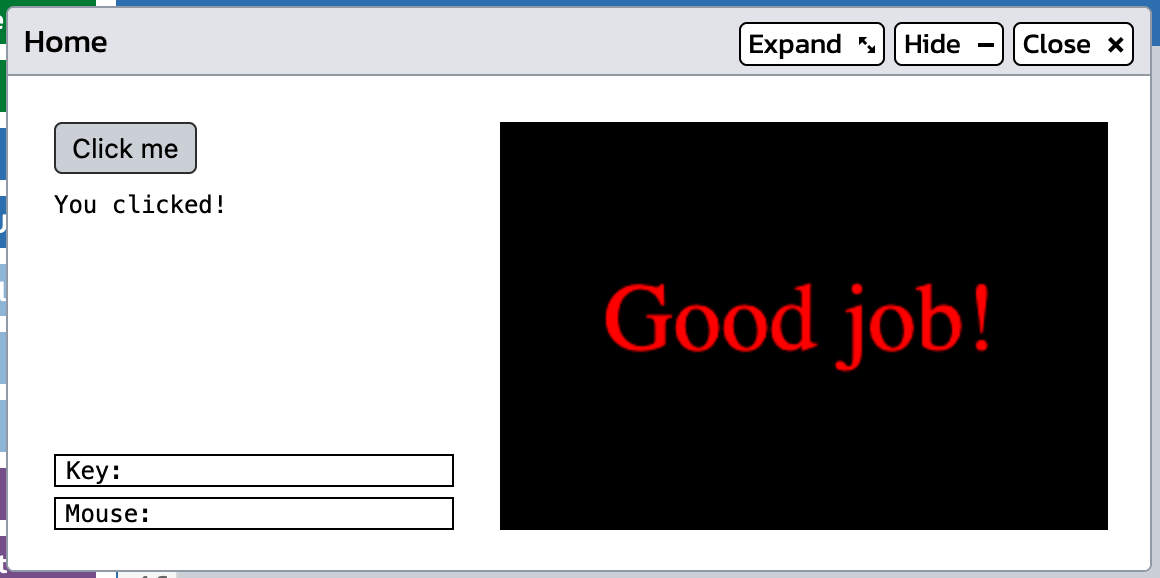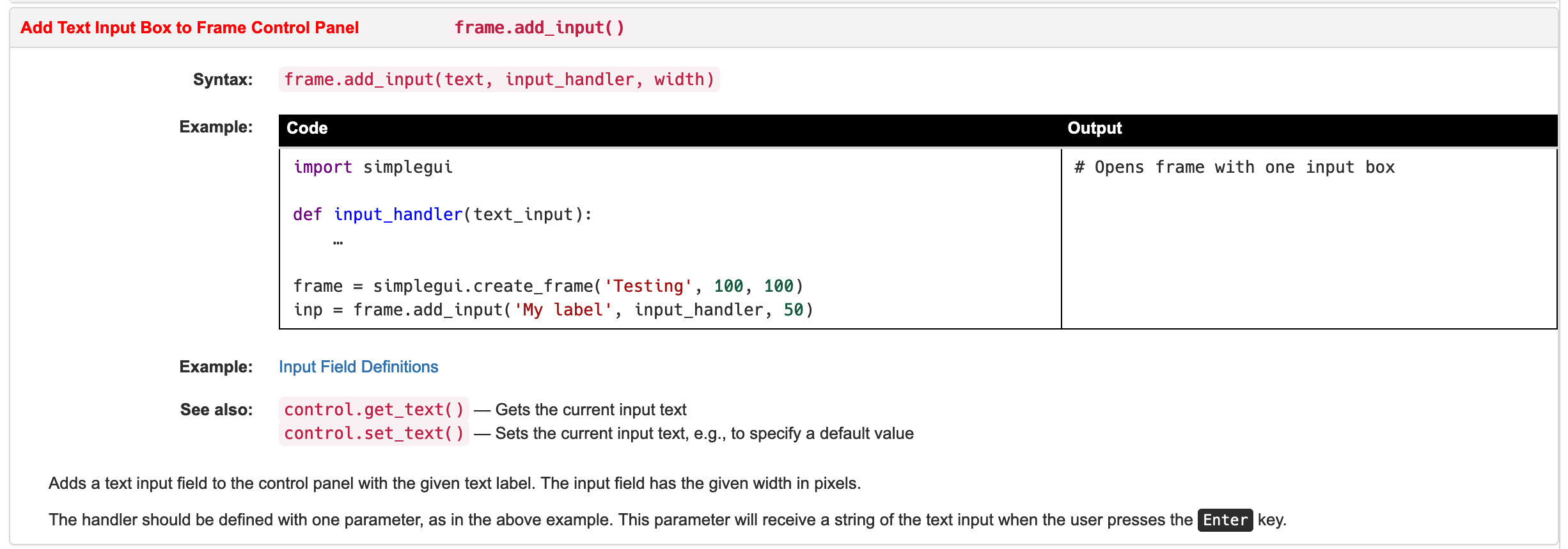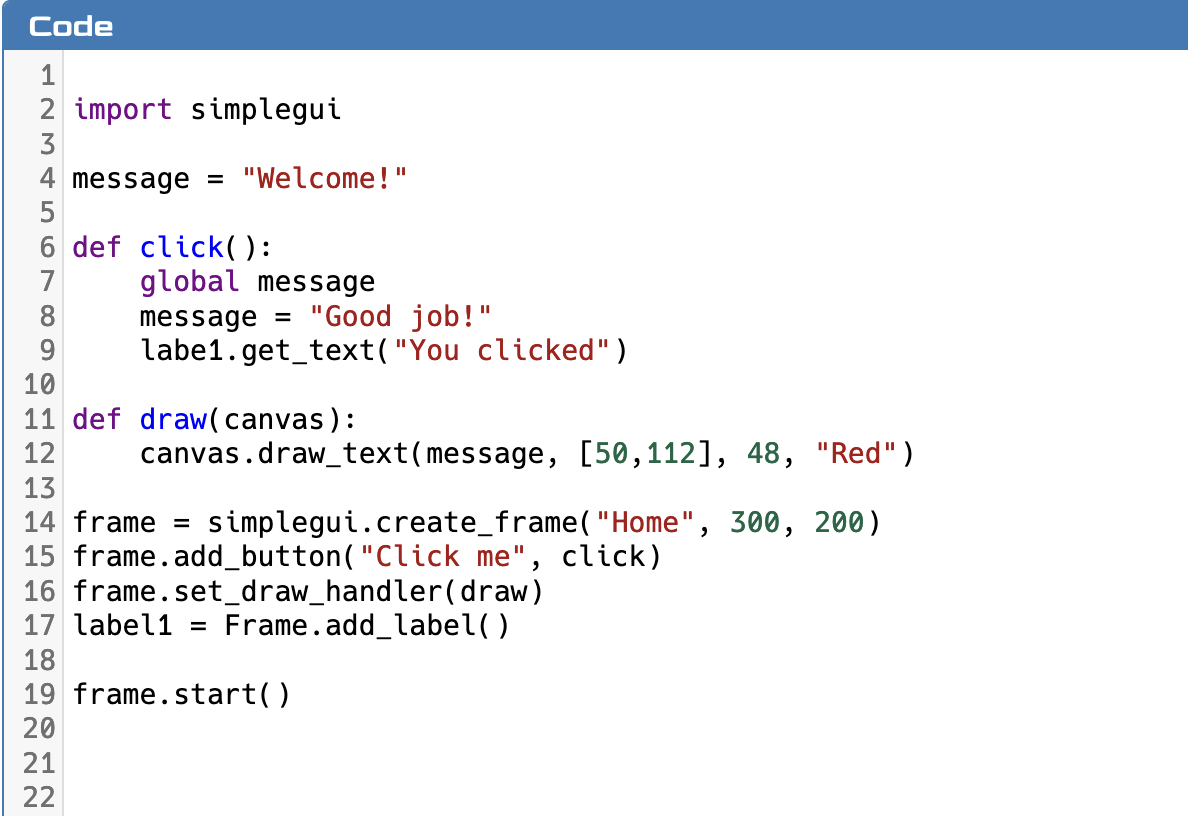Section 10.6 Adding GUI Controls
Graphical user interfaces commonly have lots of different controls, often referred to as ‘user interface widgets’. These include buttons, drop-down menus, checkboxes, text input fields, sliders, radio buttons, menus, etc. For any GUI toolkit you use, you will need to look at the library of widgets available to you and browse the documentation to find out how to write the code to add these to your program screen. In most toolkits, there are a lot of configuration options for each widget, such as the size and colour, but there is also often a way to specify the look and feel of the whole set of interface controls at a global level. Similarly, you often need to think about placement - how do you decide where to put each control? Most sophisticated GUI toolkits have something called a ‘layout manager’ and you can use that to help with the layout.
You might be thinking ‘this sounds a lot harder than I first thought it would be’ and you’re right. User interface design is somewhat of an art form. It takes practice and skill to design a good user interface. In this course though, we are keeping things simple by using the SimpleGUI module. The SimpleGUI module doesn’t provide options for customizing the look of the widgets or the layout. The user interface controls in SimpleGUI are very limited (just labels, buttons, and text input boxes), and they are only placed in the left hand control area, in the order you specify, from top to bottom.
Let’s work through adding a few user interface widgets, continuing to use the starter code example on CodeSkulptor 3.
Subsection 10.6.1 Adding Labels
Labels are considered static interface elements: they aren’t clickable and they don’t allow the user to do anything, they simply provide information. So, there is no event handler that needs to be attached to a label. Try adding a label to the SimpleGUI starter code. Flip back to the browser tab where the Codeskulptor starter example is, and add a label, like this:
label1 = frame.add_label("This is a label")
If you add the above line of code after the line of code that creates the button, and then you run the application, you should see something like this:
Now, let’s go back to the documentation and look at the related function for changing label text. Click on the ‘control.set_text()’ link on the documentation page (under the example code for adding a label). The documentation for the set_text() function shows some examples of how to use this function. Let’s make the example program change the label text when the user clicks the button. Add the following text to the click() handler:
label1.set_text("You clicked!")
Now, when you run the program and click the button, the program should update the text displayed on the canvas and it should update the label in the controls at the left, like this:
Subsection 10.6.3 Adding Text Input Boxes
Text boxes allow us to get text from the user, similar to the way the Python input() statement does, but, we get to place the text input box (or multiple input boxes) in a window alongside other user interface elements, so this is much more useful. Let’s add a text input box that allows the user to change the message displayed on the canvas.
Look at the documentation page and see the description of the text input:
The syntax line tells us that we use the ‘add_input()’ method, and we have to give it three parameters: the label (that goes in front of the text input box), the name of the input_handler function, and a width for how wide to make the box. Note that at the bottom of this documentation, there is a line that says “the handler should be defined with one parameter…. This parameter will receive a string of the text input when the user presses the Enter key.” So, that means we need to create a handler for the text input box that has a parameter. In the example code, we see that it is customary to use ‘text_input’ as the name of this parameter, and to assign the text_input control that is created to a variable called ‘inp’.
We will follow these conventions and modify the code as follows:
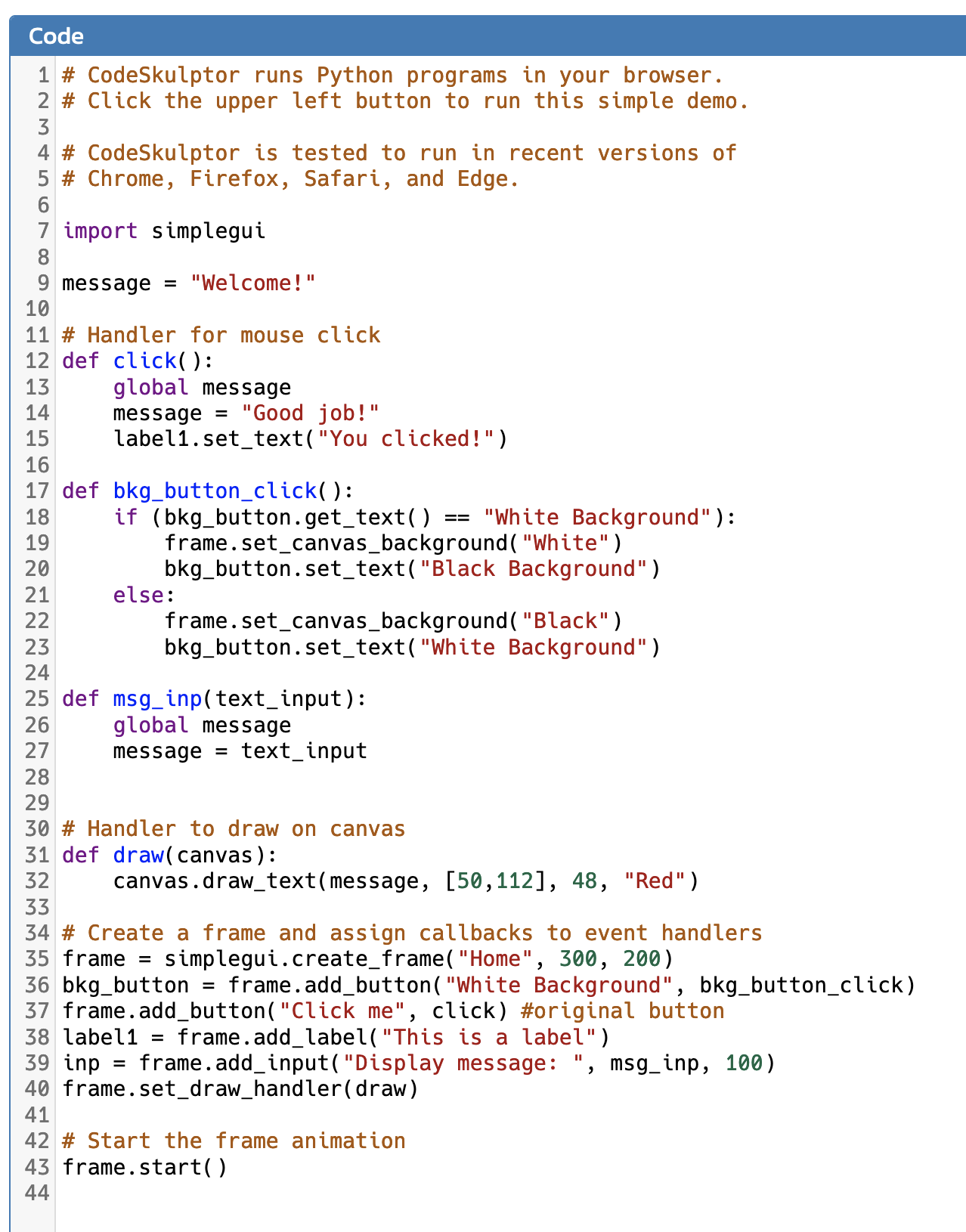
On line 39 we add the input text box to the frame, and then on lines 25-27, we add code to change the canvas display message. Note that on line 25, the function definition for the text input handler has a parameter. When this code is run and the user types text in the box and hits enter, the operating system notifies the Python interpreter that a text input event happened and passes the typed text on. Python gives it to this handler code as the text_input parameter. Then our code uses it by assigning it to our global message variable. Every few milliseconds, the Python interpreter will automatically call the draw method to refresh the canvas in this window, so we don’t need to do anything specific to get the new message displayed, it will just happen automatically the next time the draw method is called. Since that happens so frequently, it will feel like the text change happens instantaneously when the user hits the Enter key.
Check your understanding
Checkpoint 10.6.1.
Using the default code on CodeSkulptor, Sam wants to change the “Click me” button to work as a toggle button. However, he gets the following error message after clicking the button.
Which of the following would correct the error on line 6?
Remove the () parentheses from the if statement.
The if statement works when the evaluated expression is enclosed by () parentheses or is not enclosed by () parentheses.
Replace the equality token (==) with the assignment token (=).
The equality token is needed for the expression to evaluate to a boolean value.
Realign the if statement indentation.
The alignment shown is actually correct.
“global message” needs to be inserted above the if statement.
Yes, because the global variable, message, needs to be properly accessed within the local scope of a function in order to modify its value.
Checkpoint 10.6.2.
A classmate asks if the following code will run without any errors. What do you say? Select all that apply.
Everything looks great and this code should run without errors.
Incorrect, there are a few errors.
Add code to define and register an event handler function for the label.
Labels do not directly respond to events and thus do not require an event handler function.
Line 9, there is a name error with “labe1” not defined.
Correct!
Line 9, get_text() should be replaced with set_text() to change the text on the label when button is clicked.
Correct!
Line 17, there is a name error with “Frame” not defined.
Correct!
Line 17, the add_label() function requires one argument.
Correct!
Checkpoint 10.6.3.
import simplegui
def input_handler(text_input):
global message
message = text_input
frame = simplegui.create_frame('Testing', 150, 150)
inp = frame.add_input('My label', input_handler, 50)
frame.start()
You are given the above starter code for an assignment. Which of the following changes do you make to increase the width of the input box?
There is a default width to the input box so this change is not possible.
The width of the input box can be modified.
Decreasing the width of the canvas dimension will automatically increase the input box width.
Incorrect, copy and paste this code into CodeSkulptor and modify the canvas width to verify.
Add a fourth argument to indicate the input box width for the function, frame. add_input().
Incorrect, adding a fourth argument will cause a runtime error. Consult the documentation to find out more.
Increase the value of the third argument for the function, frame. add_input().
Correct! However if you increase the amount too much, a portion will overlap with the canvas. Copy and paste this code into CodeSkulptor to test it.
You have attempted
of
activities on this page.
